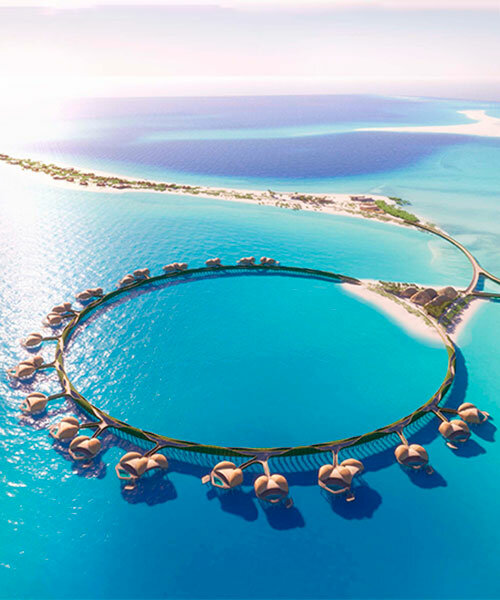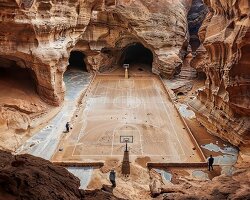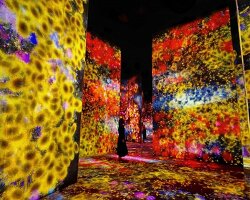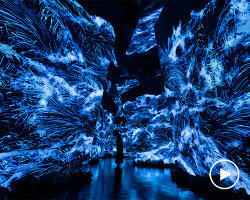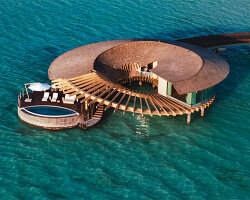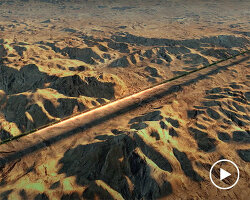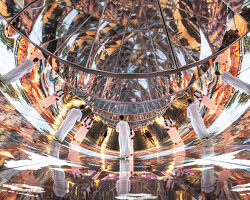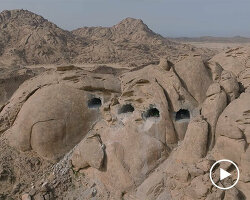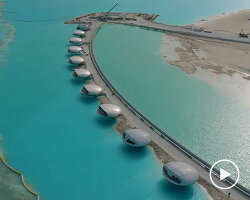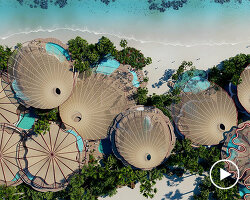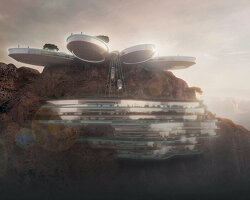the latest news on the Red Sea in saudi arabia
The Red Sea, often hailed as the ‘world’s most ambitious luxury tourism development,’ is rapidly taking shape along the Saudi Arabian Red Sea Coast. The innovative project is making remarkable progress across all its destinations, including Shura Island, Sheybarah Island, and Desert Rock. Spanning an archipelago of over 90 pristine islands, miles of sweeping desert, and dramatic mountain landscapes, the project boasts the active participation of esteemed architecture firms, such as Foster + Partners, Kengo Kuma and Associates, Oppenheim Architecture, and Killa Design.
To gain the latest insights into the ambitious endeavor, its fusion of science, technology, and tourism, as well as its commitment to sustainability, designboom spoke with Scott Henshaw, the Group Head of Design at Red Sea Global. ‘Honoring the natural environment plays a critical role in the design plans for all locations and attractions across the Red Sea,’ he shares. ‘When complete, guests will enjoy a completely unmatched stay at our destinations by offering authentic cultural experiences and combining nature, and sustainability as one.’
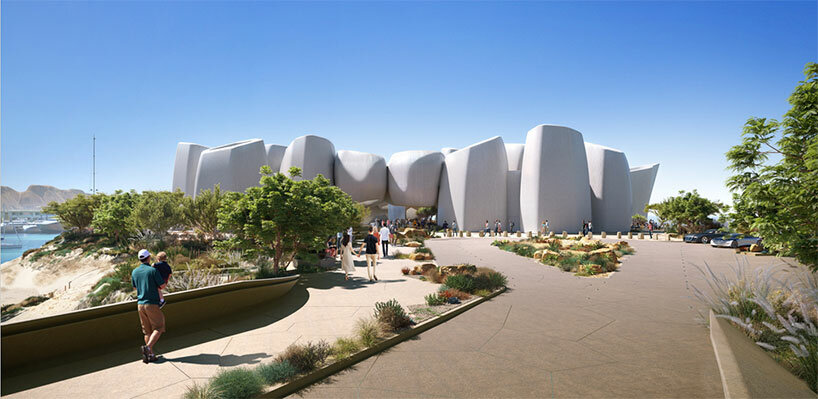
the Marine Life Institute by Foster + Partners (see designboom’s coverage here) | all images courtesy of Red Sea Global
Interview with Scott Henshaw, RSG HEAD OF DESIGN
designboom (DB): What are some cutting-edge, real-life examples of science, tech, and tourism coming together on the Red Sea?
Scott Henshaw (SH): At Red Sea Global (RSG), we’re leveraging the most innovative scientific concepts and technologies to deliver on our commitment to develop two regenerative tourism destinations on the west coast of Saudi Arabia – The Red Sea and Amaala.
For instance, before development even began at The Red Sea, before a shovel hit the ground, we sent in scientists to catalog and assess the stunning biodiversity of The Red Sea destination area. Based on what they learned through a large-scale Marine Spatial Planning (MSP) exercise, we decided to develop just 1% of the entire 28,000 square-kilometer area – a site that’s the size of a small country – and to leave the rest untouched. It is this MSP exercise that led us to set a target of achieving a 30% net conservation benefit to the area by 2040 by enhancing biologically diverse habitats like mangroves, seagrass, and coral reefs – a goal we also applied to Amaala.
As part of this, we have a dedicated team of scientists who have identified areas surrounding our destinations where coral restoration is crucial. They are already working to rectify this through methods such as creating artificial reefs that will not only boost coral survival rates but also provide a haven for wildlife to flourish.

luxury villas on Ummahat Alshaykh Island by Kengo Kuma and Associates (see designboom’s coverage here)
DB: What are some of the science/conservation activities that will attract and excite tourists?
SH: Our research shows that travelers are more aware of their environmental impact than ever. But what we are starting to see is that they don’t just want to minimize their negative impact, they want to go beyond this and make a positive difference when they travel.
We are determined to offer experiences that allow them to make a difference – for example, planting mangroves in the morning, enjoying authentic Saudi cuisine in a local village at lunchtime, and ending the day looking at a night sky that has been actively protected from light pollution for the health of our wildlife.
We are also looking at how we can bring science to life for our guests by creating interactive experiences that showcase our conservation efforts. Our state-of-the-art marine life institute is a key example of this. It will act as both a hub for scientific research and a tourist attraction. In addition to accelerating conservation-driven research, it will offer visitors truly immersive experiences that combine educational exhibitions with adventure-filled excursions. Guests will be able to walk underwater, snorkel with rare species, participate in lab tours, and more.
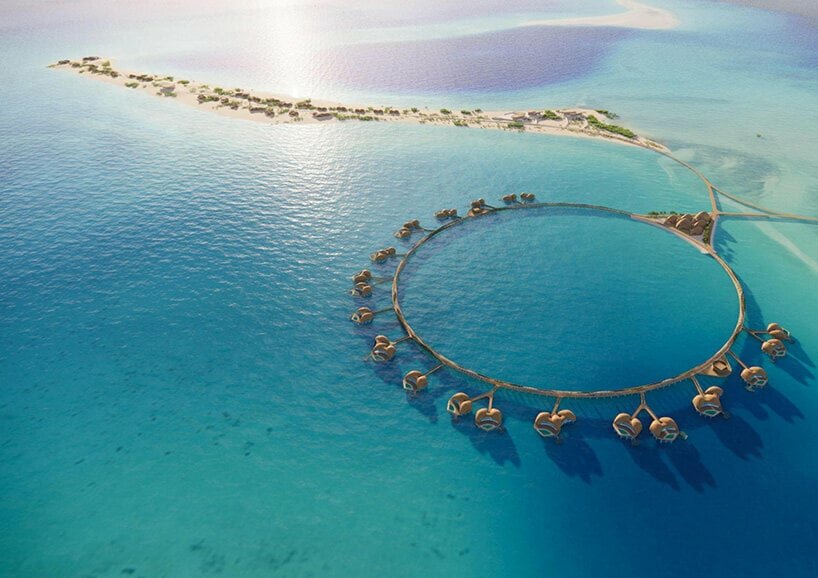
hotel 12 on Ummahat Alshaykh Islands by Foster + Partners (see designboom’s coverage here)
DB: Could you provide more information on how Red Sea plans to use algae, seagrass, and mangroves to reduce carbon in the ocean and atmosphere? Also, can you elaborate on the concept behind the floating nurseries designed to restore coral reefs?
SH: We are determined to put people and planet first, and will leverage the most innovative concepts and technologies to deliver projects that help us achieve this. Sometimes, nature already offers the best solution. To help reduce our carbon footprint, we’re developing a number of nature-based initiatives such as enhancing biologically diverse habitats including algae, seagrass and mangroves.
Mangrove trees are among the most efficient tools we have for carbon sequestration, with the capacity to absorb up to 5-10 times more carbon than other plants. As part of our efforts to deliver carbon-negative destinations, we opened our first mangrove nursery last month to cultivate seedlings – a significant step in our commitment to plant 50 million trees by 2030.
Investing in regenerating coral reefs can also have substantial environmental benefits. With this in mind, we’re developing floating coral nurseries that help regenerate and propagate corals. The platforms, made from composite wood, aluminium and high-density polyethylene, hold coral and encourage growth.
As part of our broader strategy to boost coral populations in the Red Sea, corals being held in nurseries are broken down into smaller fragments, which can each regenerate into a new colony. After a six- to eight-month stay in the nurseries, the fragments will have sufficiently grown to be returned to sections of the reef with lower coverage.
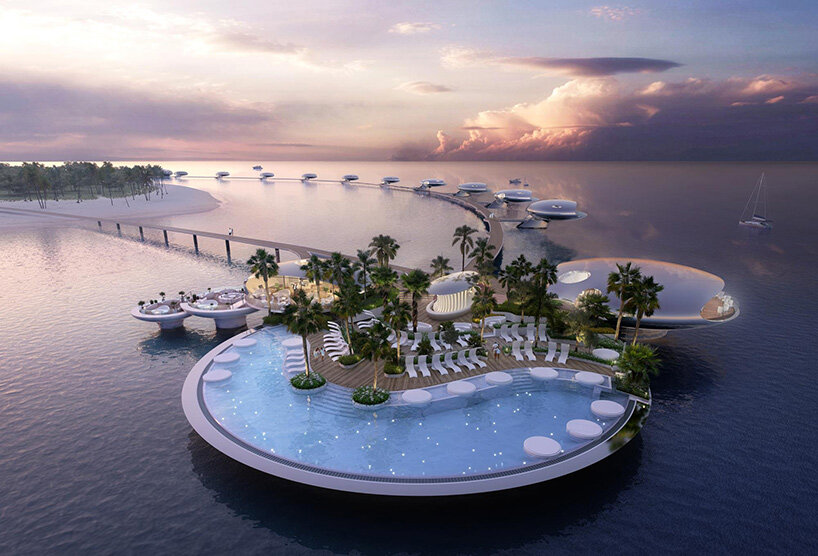
overwater villas on Sheybarah Island by Killa Design (see designboom’s coverage here)
DB: In a recently released video, you shared details of the six-year progress on Shura Island, Sheybarah Island, and Desert Rock. Could you provide an update on the specific advancements of the Red Sea International Airport and its anticipated operational timeline?
SH: Red Sea International (RSI) airport is progressing as planned and is on track to receive its first domestic flights later this year, before opening to international routes in the future.
RSI is designed to benefit both people and the planet and aims to be the first carbon-neutral airport in the Middle East. Powered solely by renewable energy, it is also set to provide guests with a seamless experience through a new smart system that will replace traditional baggage carousels and deliver luggage straight to hotel rooms.
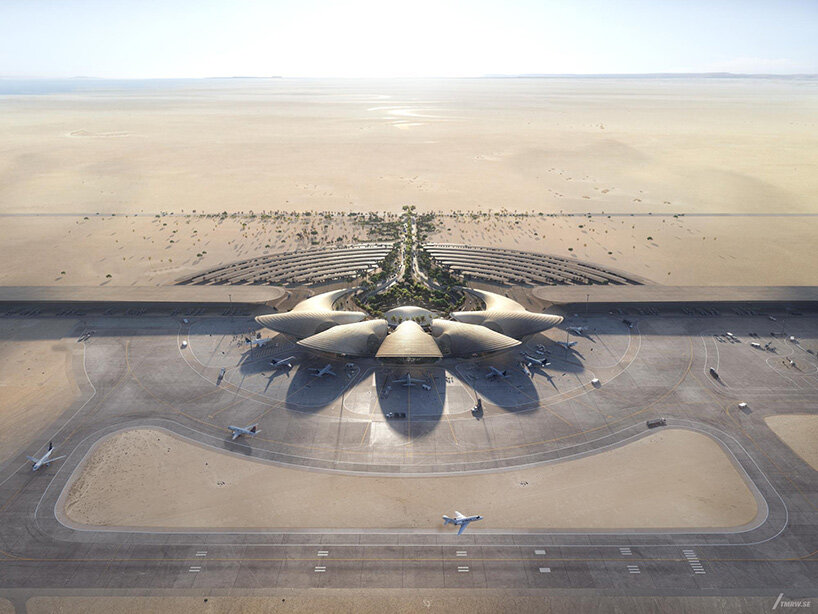
the Red Sea International Airport by Foster + Partners ( see designboom’s coverage here)
DB: The design concept for Shura Island is known as Coral Bloom because of how it carefully blends in with the pristine natural beauty of the surrounding landscapes. How does the design by Foster and Partners achieve that?
SH: As part of our ambition to build with the land rather than on it, we’ve opted against developing high-rise buildings on the island to ensure that our development doesn’t obstruct the beauty of the surrounding area. Instead, our Coral Bloom hotels are being constructed to nestle into the existing landscape. They are designed to give the impression that they have washed up on the beaches and nestled among the dunes almost like driftwood. Each of the villas is built using lightweight materials and manufactured offsite before being assembled on the island. Every decision we take is to ensure that the pristine environment is protected, while the additions we make to the island serve to enhance what is already there.
Honoring the natural environment plays a critical role in the design plans for all locations and attractions across The Red Sea and Amaala.
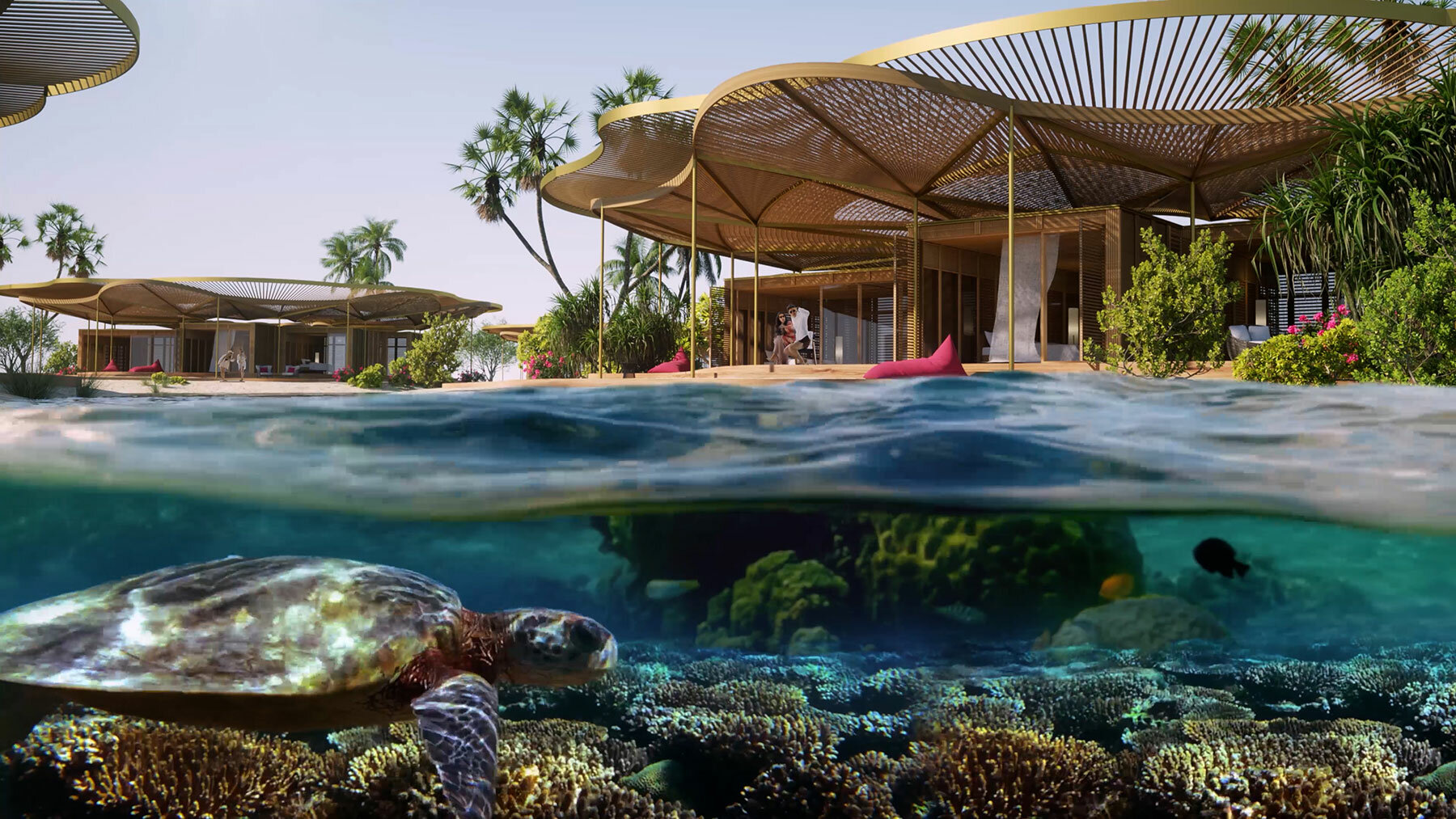
the Shura Island also known as the Coral Bloom concept designed by Foster + Partners
DB: In Sheybarah Island, the design of villas aims to prevent coral reef damage. What are the key design principles employed to ensure minimal impact on the underwater ecosystem?
SH: Sheybarah Island features a spectacular 30 to 40-meter reef drop-off close to the beach providing the ultimate spot for exploring ocean life. Ensuring that we prevent disturbance to this pristine natural environment during development is crucial.
For Sheybarah Island, we partnered with Grankraft to remotely prefabricate our stainless-steel overwater villas, a method which helped to minimize noise, ground disturbance and vehicle movements that could otherwise disrupt the underwater ecosystem.
Installing our first villa was an anxious moment for everyone as we were about to find out whether all the careful planning, design and environmental impact assessment work was going to pay off. That first overwater villa took us nine hours to install, as we made precise mm by mm adjustments. By the time we installed our 38th and final overwater villa, we had managed to get that process down to less than two hours. Now, we’re starting work on the beach villas and the learning process starts all over again.

Sheybarah Island by Killa Design (see designboom’s coverage here)
DB: The extensive excavation and tunnel construction for the Desert Rock resort by Oppenheim Architecture may seem intrusive in the mountainous terrain. How does the project ensure environmental conservation and safeguarding throughout this process?
SH: We’re determined to maintain the history of the areas that we operate in. Key to this is integrating architecture with nature. That’s why the unique rock formations, produced by a series of cataclysmic seismic events thousands of years ago, have been included in the design plans for Desert Rock.
Created by Oppenheim Architecture, the resort is being developed in line with our ethos to not only protect but enhance the environment, as well as support surrounding communities. As part of this, Desert Rock includes infrastructure that reduces energy consumption, regenerates native flora, and harvests rainwater to create a flourishing Wadi. We’re making careful, steady progress in the development of Desert Rock. Overall, we’re more than 50 percent complete, with construction progress more than 25 percent complete. We’re working methodically to ensure environmental protection and that the end result is exactly what we envisioned.
When complete, guests will enjoy a completely unmatched stay at our destinations by offering authentic cultural experiences and combining nature, and sustainability as one.
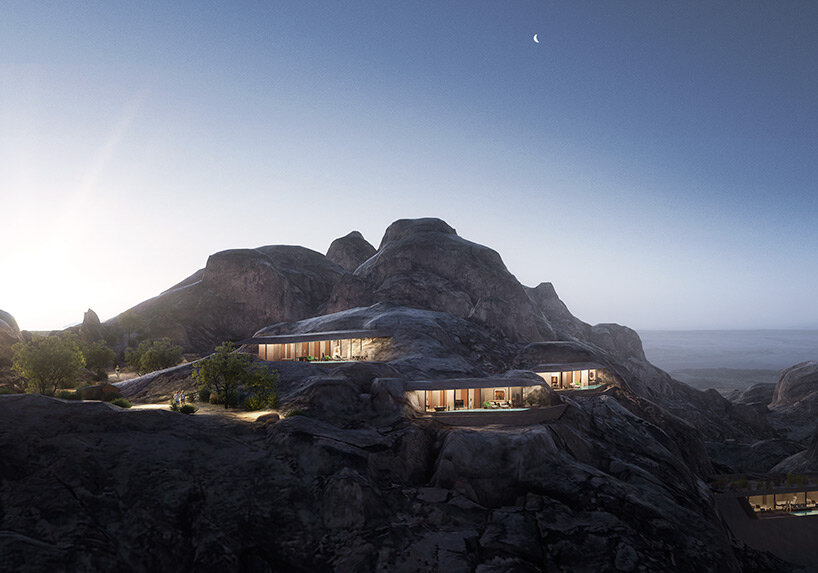
Desert Rock by Oppenheim Architecture (see designboom’s coverage here)
DB: The Marine Life Center is positioned as a hub for scientific progress. How do you plan to foster collaboration between the scientific community and the general public, ensuring that visitors are active participants in the ongoing environmental projects and discoveries?
SH: Our marine life institute is designed to function as both a scientific research center and a tourist destination. It will accelerate conservation-driven research, while offering visitors truly multidimensional experiences that bridge educational exhibitions with adventure-filled excursions.
Visitors and the general public will have a host of opportunities to get involved in the work being conducted by our scientists. From participating in expeditions that involve going out into the field with coral farmers and shark researchers to monitoring activity and the broader marine environment, as well as to help release rehabilitated animals, the institute will offer an unforgettable immersive and educational marine experience unlike any other.
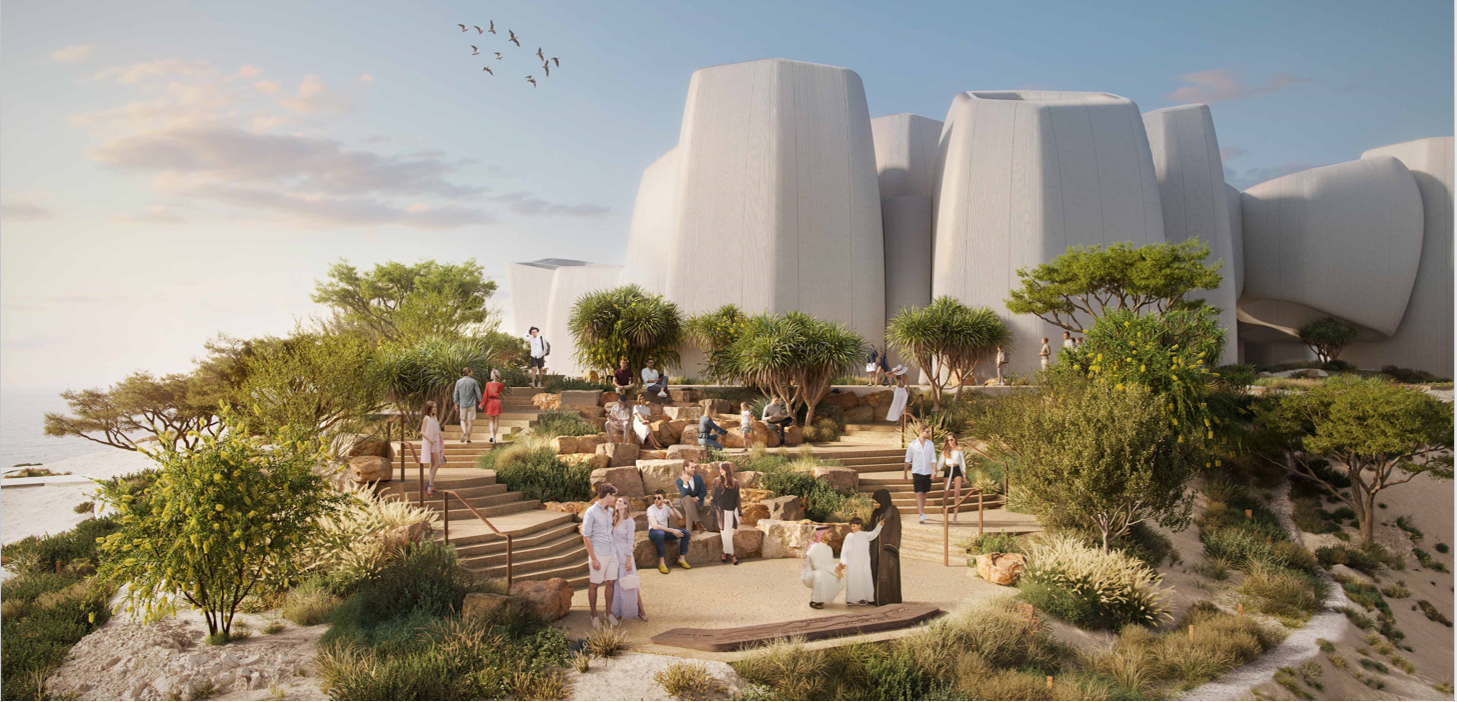
the Marine Life Institute by Foster + Partners (see designboom’s coverage here)
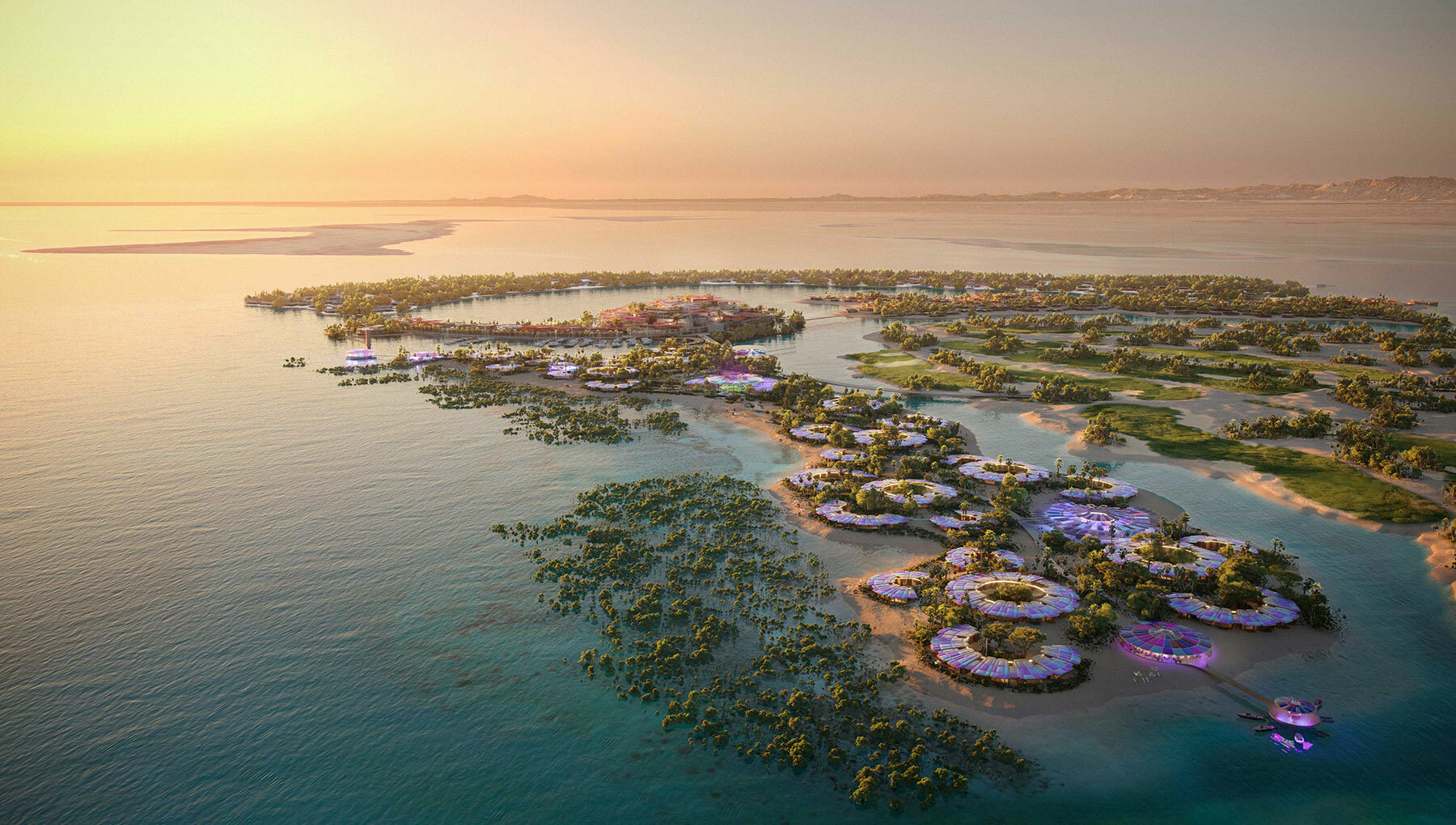
the Shura Island also known as the Coral Bloom concept designed by Foster + Partners
project info:
name: Red Sea Project
developer: Red Sea Global
location: Saudi Arabia
architecture interviews (267)
art and architecture in saudi arabia (89)
the red sea project (12)
PRODUCT LIBRARY
a diverse digital database that acts as a valuable guide in gaining insight and information about a product directly from the manufacturer, and serves as a rich reference point in developing a project or scheme.
